The Six Systems Thinking Steps to Solve Complex Problems
A quick overview of common problem solving techniques indicates that most of these methods focus on the problem rather than the whole eco-system where the problem exists. Along with the challenges of global economy, problems turn out to be more complicated and sometimes awakening problems. Climate change, traffic problems, and organizational problems that have developed through the years are all complex problems that we shouldn’t look at the same way as simple or linear problems. Part of the problem of thinking about a complex problem is the way we approach it, which may contribute to making the problem even more complex. As stated by Albert Einstein, “The problems cannot be solved using the same level of thinking that created them.” Systems thinking tends to focus on the broader ecosystem rather than the problem itself.
Systems thinking was developed by Jay Forrester and members of the Society for Organizational Learning at MIT. The idea is described in his book, The Fifth Discipline, as follows: “Systems thinking is a discipline for seeing wholes. It is a framework for seeing interrelationships rather than things, for seeing patterns of change rather than static ‘snapshots.’” A common example of the systems thinking method is the life around us where multiple systems interact with each other and are affected by each other. This wide perspective of systems thinking promotes it to solve complex problems that are dependent on external factors. Below are some of the stations that system thinking may contribute to solve.
- Complex problems that involve different factors, which require understanding the big picture in order to be efficiently solved
- Situations that are affecting, are being affected by, or affect the surrounding systems
- Problems that have turned more complicated by previous attempts to solve them
Concepts of Systems Thinking
In order to understand systems thinking, a number of concepts should be highlighted in order to define the relation between the problem and the other elements in the system and how to observe this relation in order to reach an effective solution. These principles include the following.
- All systems are composed of interconnected parts, and changing one part affects the entire system, including other parts.
- The structure of a system determines its behavior, which means that the system depends on the connection between parts rather that the part themselves.
- System behavior is an emergent phenomenon. System behavior is hard to predict due its continuously changing, non-linear relations and its time delay. It can’t be predicted by simply inspecting its elements or structure.
- Feedback loops control a system’s major dynamic behavior. The feedback loop is a number of connections causing an output from one part to eventually influence input to that same part. The number of feedback loops are larger than the system parts, which contributes to increasing system complicity.
- Complex social systems exhibit counterintuitive behavior. Solving complex problems can’t be achieved through everyday problem solving methods. They can be solved only through analytical methods and tools. Solving complex problems can be achieved through systems thinking, a process that fits the problem, and system dynamics, which is an approach to model systems by emphasizing their feedback loops.
Systems Thinking in Six Steps
In their paper Six Steps to Thinking Systemically, Michael Goodman and Richard Karash introduced six steps to apply systems thinking principles while solving complex problems. These steps were part of their case study to Bijou Bottling company’s problem of getting their orders shipped on time.
Set 1: Tell the Story
The first step in solving the problem is to understand it, and this can be achieved through looking deeply at the whole system rather than individual parts. This step requires meeting with the stakeholders to share their vision about the situation. One of the common tools to build this understanding is to utilize Concept Maps, which are graphical tools used to represent the organization or a structure of knowledge. Concept Maps visually present the system’s elements, concept links, proposition statements, cross-links, and examples.
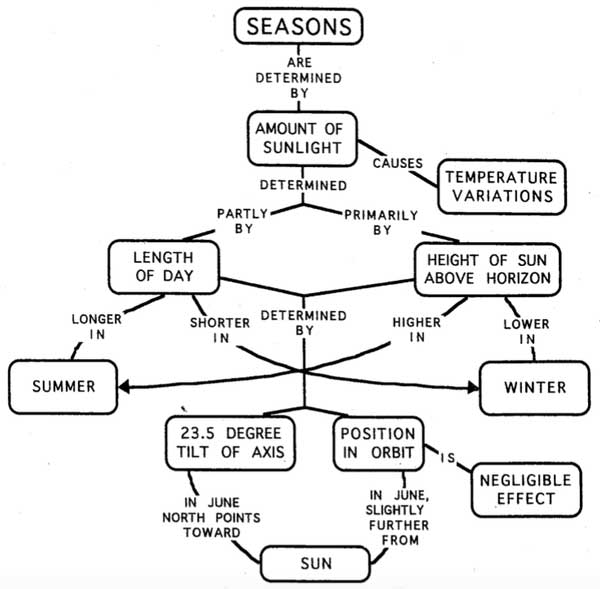
Step 2: Draw Behavior Over Time (BOT) Graphs
When thinking about a problem, we are influenced with the current situation that is reflected in our analysis, yet the problem follows a time dimension, which means that it should be tracked through the time. The Behavior Over Time graph draws a curve that presents a specific behavior (Y) through the time (X). This graph helps us to understanding whether or not the current solution is effective.
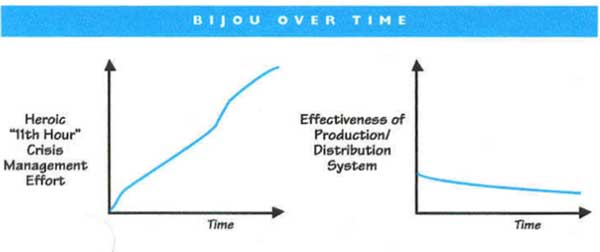
Step 3: Create a Focusing Statement
At this point, there should be a clear vision about the problem solving process, which is defined in the from of a statement that indicates the team’s target and why the problem occurs.
Step 4: Identify the Structure
After having clear vision about the problem through the proposed statement, the system structure should be described, including the behavior patterns. Building these patterns helps in understanding more about the problem, and it can be formed as a system archetype.
Step 5: Going Deeper into the Issues
After defining the problem and the system structure, this step tends to understand the underlying problems through clarifying four items: the purpose of the system (what we want), the mental models, the large system, and personal role in the situation.
Set 6: Plan an Intervention
The previously collected information is used to start the intervention phase, where modifications to the current problem relate parts to connections. This intervention attempts to reach the desirable behavior.
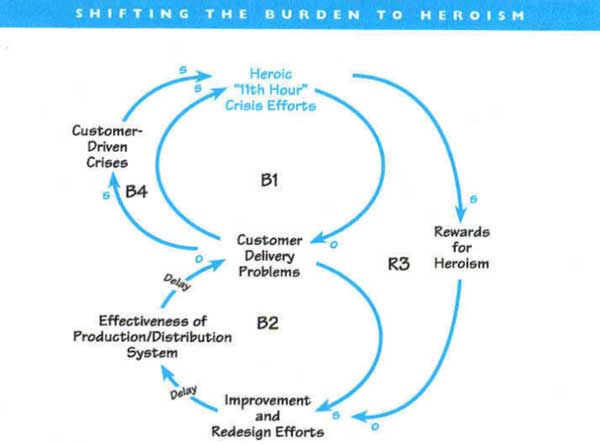
Practice Example of Systems Thinking
One of the direct examples of adopting the systems thinking method was presented by Daniel Aronson highlighting insects who caused damage crops. Traditional thinking to solve crop damage is to apply more pesticides to reduce the number of insects and subsequently reduce the crop damage. However, this solution solves the problem for a short term. In the long run, the problem isn’t truly solved, as the original insect eating the crops are controlling the population of another species of insect in the environment either by preying on it or competing with it. Subsequently, the crop damage increases again due to the increasing numbers of other insect species.
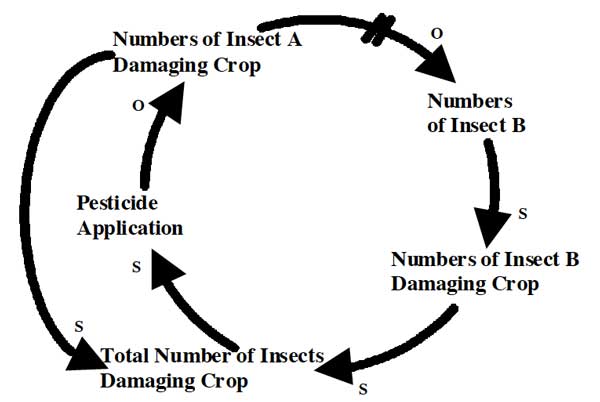
Observing the ecosystem that includes both the insects and the crops, systems thinking suggests exploring a solution that ensures reducing the crop damage in the long run without affecting the environmental balance, such as deploying the Integrated Pest Management that has proven success based on MIT and the National Academy of Science. This solution tends to control the number of an insect species by introducing its predators in the area.
Unlike everyday problems, complex problems can’t be solved using traditional problem solving methods due to the nature of the problems and their complexity. One of the theories that attempts to understand complex problems is systems thinking, which is defined by a number of characters. Six steps are to be used to explore and solve complex problems under the umbrella of systems thinking, which help us to observe and think in a whole eco-system rather than individual parts. Systems thinking can be deployed in multiple domains to solve organization problem, or global problems such as energy, pollution, and poverty.

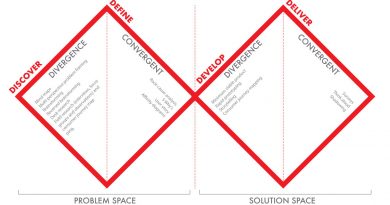

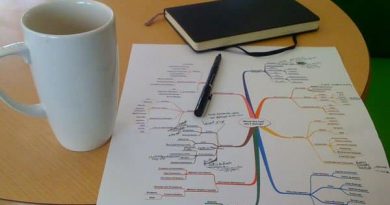



“Systems thinking was developed by Jay Forrester and members of the Society for Organizational Learning at MIT. The idea is described in his book, The Fifth Discipline, as follows:” Peter Senge is the author of The Fifth Discipline
Thank you so much Misi for the helpful information.
Thank you for the valuable information. I believe that systems thinking can be applied to every aspect of our lives. When you teach yourself to spot patterns, cycles, and loops instead of individuals elements. You see behind the scenes. Understand what actually needs addressing to move forward and make progress faster with less damage.